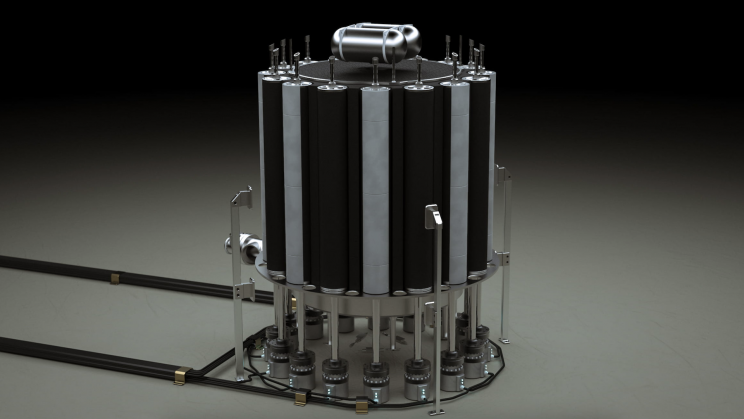
Last week we wrote about potential nuclear fusion plants for the UK and what a positive impact they could have on the economy and environment. Staying on the topic of cleaner energy, former SpaceX engineers are developing the first-ever portable nuclear microreactors. These devices could deliver power to remote areas while the quick installation process makes them ideal for populated areas as well.
Bringing Affordable Power To Those Who Need It Most
Last year, the team of engineers from start-up, Radiant, secured $1.2 million in funding from angel investors to help develop portable nuclear microreactors. They will manufacture these devices for both commercial and military applications bringing a new dimension to portable power sources.
We’ve mentioned floating nuclear power stations in earlier posts like the ones from the Danish firm Seaborg Technologies. However, the nuclear microreactors Radiant is busy developing is a cut above the rest and could revolutionise portable nuclear power.
While still in the prototype phase, it outputs more than 1MW which is enough to power around 1,000 homes for up to eight years, according to Radiant. Due to its compact size, transporting the portable nuclear microreactors is much easier whether by air, sea or road, delivering affordable power to communities that don’t have easy access to renewable energy.
Adapting Space Technology To Develop Nuclear Microreactors
Radiant founder and CEO, Doug Bernauer, is a former SpaceX engineer who worked on numerous projects during his time at the company. One that set things in motion was developing energy sources for future Mars colonies.
During his research into nuclear microreactors for Mars, he identified an opportunity to develop more flexible and affordable power sources for Earth. This resulted in him creating the company, Radiant, with two other former SpaceX engineers.
In a recent interview, Doug Bernauer said: “A lot of the nuclear microreactors being developed are fixed location. Nobody has a [commercial] system yet, so there’s kind of a race to be the first.”
How Do Nuclear Microreactors Work
Radiant received two provisional patents for its portable nuclear reactor technology in 2020. While one was for a technology to reduce the cost and time needed to refuel their reactor, the other patent improves efficiency in heat transference from the reactor core.
These nuclear microreactors use an advanced particle fuel that won’t meltdown and can withstand higher temperatures than traditional nuclear fuels. They also contain Helium coolant that reduces corrosion and risks of contamination associated with traditional water coolants.
Radiant recently signed a contract with Battelle Energy Alliance to test its portable nuclear microreactors at its Idaho National Laboratory (INL). If you’re anything like us, we can’t wait to see the results as this could transform the energy sector across the globe.
Where Can It Be Used?
Radiant’s nuclear microreactors can be used in remote or populated areas. The biggest benefit, however, is for places such as arctic villages, research centres and isolated military encampments. Facilities here would otherwise mostly rely on fossil fuel-powered generators with maybe some solar energy but it’s not sustainable enough.
Not only are the portable nuclear microreactors better for the environment but they are also more practical. They don’t rely on the constant shipment of fuel as it uses clean fuel that can last more than 4 years.
Conclusion
If everything goes according to plan with the start-up’s test campaign, we could soon see portable nuclear microreactors. This will help power countless remote communities across the world and will further promote the resurgence of nuclear power.
In a world that needs clean energy solutions more than ever, Radiant’s nuclear microreactors could provide the best solution. If you are looking to expand into the Nuclear sector, help is available from the business improvement programme – Fit for Nuclear (F4N).
For more interesting articles about engineering, manufacturing and technology, please read our blog and join us on social media. Remember to use the hashtag #PRVtech and visit our website to find out more about our wide range of services.


 Mail:
Mail: 



